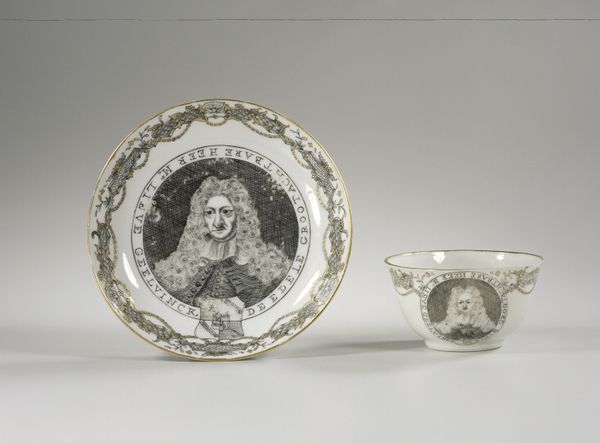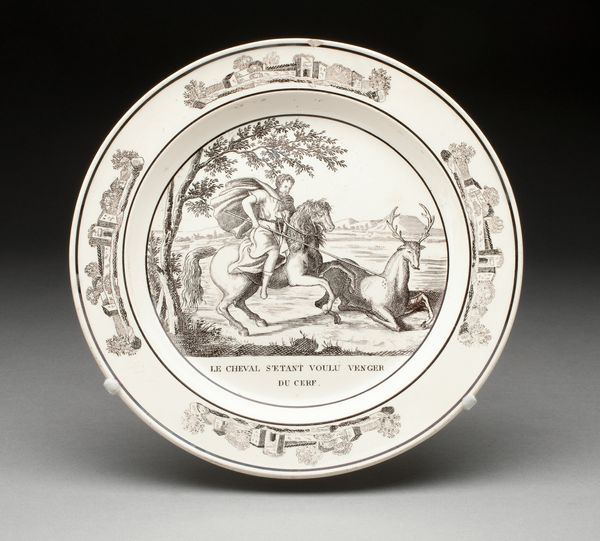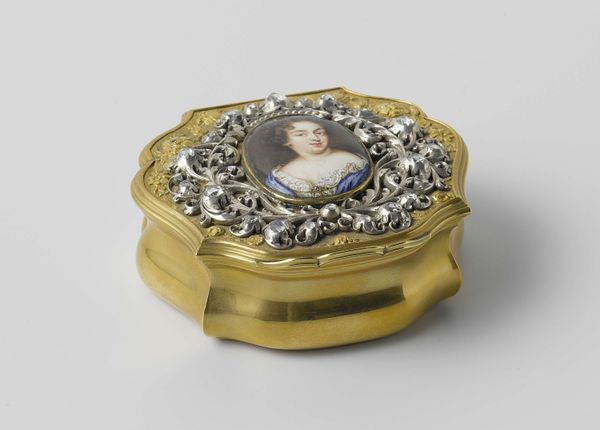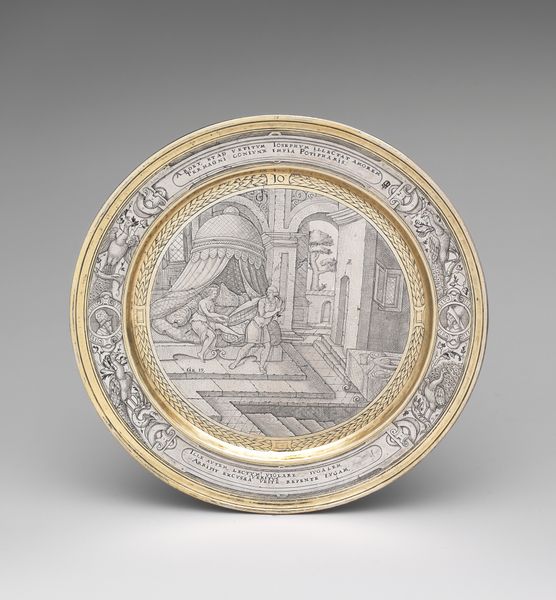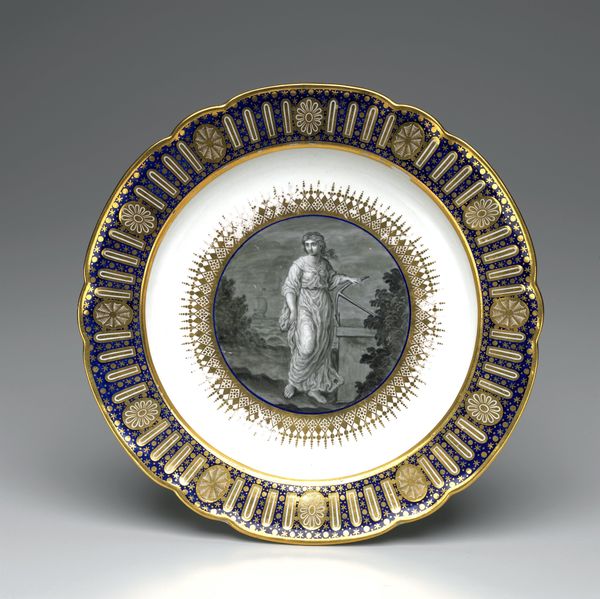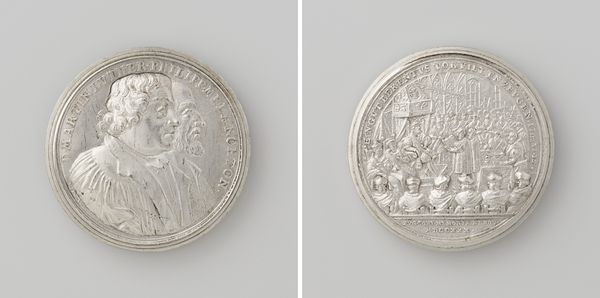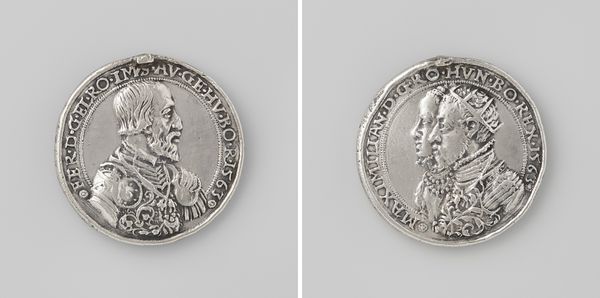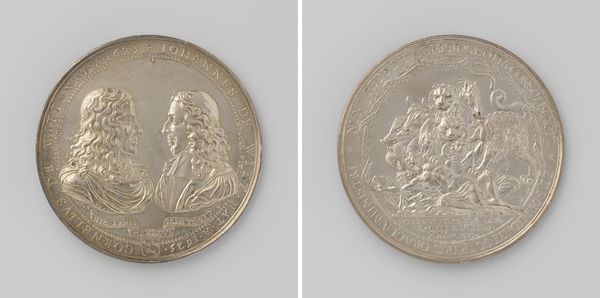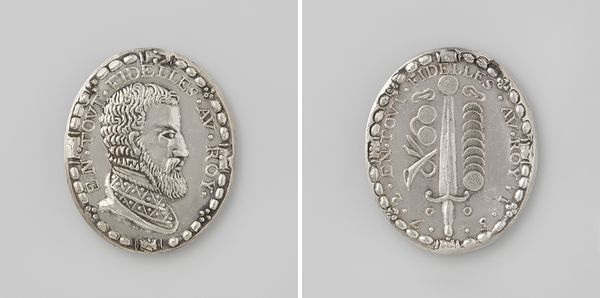
ceramic
#
portrait
#
baroque
#
ceramic
#
ceramic
Dimensions: height 3.9 cm, diameter 7.1 cm, diameter 3.1 cm
Copyright: Rijks Museum: Open Domain
Curator: Looking at this cup and saucer, "Bell-shaped cup with a portrait of Johannes Cocceius", dating from around 1725 to 1749, I'm immediately struck by the domestic intimacy juxtaposed with the formality of portraiture. It's a quirky combination. Editor: Yes, the materials tell an interesting story here. This ceramic ware presents a complex relationship between class, consumption and artistic production in the early modern period. The ceramic acts not only as a canvas but also a social signifier. Curator: It’s charmingly strange, isn't it? Sipping tea, but stared back at by this earnest theologian, Cocceius. I wonder what thoughts he would stir, suspended on the rim of your morning ritual. There’s something melancholic about his permanent, miniature confinement. Editor: Porcelain like this was an exclusive commodity; this tells us about trade routes, labor and craft networks necessary for production and the high value attributed to specific materials and skills at this time. A theologian's likeness adding extra layers to that value, definitely intended for a learned and wealthy clientele. Curator: Maybe they debated Cocceius's theological interpretations over steaming cups of Earl Grey, or just admired his wig while contemplating the weightier questions of existence? It's this tangible, human connection, however removed, that captivates me. The artist would not only be a craftsman but also an interpreter. Editor: The commercial aspect intrigues me. Considering who produced this, who consumed it, the systems of apprenticeship and craftsmanship behind it; there’s a silent dialogue with labour happening when someone bought and owned this porcelain cup. The making of art became a complex interaction between creativity and market dynamics. Curator: Right, you strip away the sentiment and see the mechanism beneath. Yet, somehow, it becomes even more fascinating that way. Editor: Absolutely, from production to consumer habits, these details can reveal how culture and meaning were manufactured back then. Curator: Yes. It has been illuminating to consider not only how art is displayed and perceived but the layers that constitute the objects themselves, literally. Editor: Precisely, making this small cup infinitely larger, at least conceptually!
Comments
No comments
Be the first to comment and join the conversation on the ultimate creative platform.
